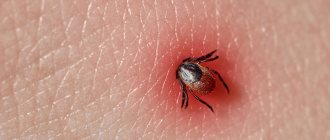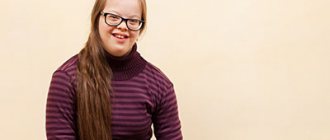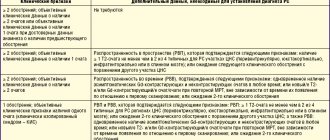Cerebral palsy (cerebral palsy) is a disease that primarily affects the musculoskeletal system. It develops against the background of pathological damage to certain areas of the brain or their incomplete development. Many women carrying a child are afraid that this could happen to their baby, so quite often the question is raised among expectant mothers: is cerebral palsy visible on an ultrasound during pregnancy?
First of all, you need to clearly find out what this pathology is, what factors provoke it, and also what role ultrasound plays in prenatal diagnosis. Quite often, it is precisely because of ignorance of these concepts that a pregnant woman may have such a question.
General information about cerebral palsy
Cerebral palsy is characterized by a wide variety of disorders of the spinal column and limbs. First of all, a noticeable failure is observed in the coordination of movements, muscle structures are especially affected. Motor ability is lost due to damage to brain structures. The degree of muscle pathologies, their shape and nature directly depend on the volume and area of brain damage.
Musculoskeletal problems are not the only thing that makes cerebral palsy different. In addition, the following pathologies may develop:
- disturbances in the functioning of the organs of hearing and vision;
- decreased speech ability;
- various forms of epileptic seizures and convulsions;
- retardation in mental and mental development;
- impaired perception of the surrounding world;
- spontaneous excretion of feces and urine, breathing problems.
Cerebral palsy does not get worse with age. This is due to localized damage to brain structures and limited spread to new tissue.
Quite often, the causes of cerebral palsy in children are not related either to the mother herself or to the qualifications of obstetricians
Basic approaches to the treatment of cerebral palsy
Helping a child with cerebral palsy involves the involvement of a team of various medical, pedagogical and social specialists. In this case, the active participation of parents plays an important role. Continuity of care is key.
Therapeutic exercise for cerebral palsy. Photo: olesiabilkei / Depositphotos
Rehabilitation therapy
Cerebral palsy is an incurable disease. Therefore, the early start of complex therapy plays an important role in the development of motor and speech skills available to the child. The rehabilitation program is selected individually, based on existing defects.
The basis of rehabilitation for cerebral palsy is massage and physical therapy (physical therapy), which should be carried out daily. Therefore, the child’s parents should master basic skills and exercises.
Motor activity skills are acquired through kinesiotherapy. It consists of repeated repetitions of normal movements that must be mastered. The most effective approaches are Vojta therapy, Bobath therapy, and PNF therapy.
Also, as part of rehabilitation, technical means are used: orthoses, shoe inserts, crutches, walkers, wheelchairs, etc. Their purpose is to compensate for physical defects, for example, differences in the length of limbs, deformities and motor disorders.
What are orthoses?
An orthosis is a special medical device that allows you to change the structural and functional characteristics of the neuromuscular and skeletal system. They help relieve, fix or correct the functions of a damaged joint or limb. These include a variety of corsets, bandages, devices, special shoes and insoles.
With cerebral palsy, plantar flexion of the foot and ankle is often observed, which is associated with excessive tension in the calf muscles. This leads to changes in the structure of the ankle joint and foot, which causes phenomena such as valgus (inward tilt of the foot) or varus (outward tilt of the foot).
The following orthoses are used to correct these conditions and other lower extremity deformities:
- AFO (ankle and foot orthoses) – on the ankle joint and foot.
- KAFO (knee ankle foot orthoses) – on the knee, ankle joint and foot.
The purpose of orthoses is to help with movement and motor skills. However, they are not aimed at treating or normalizing muscle tone, so they cannot be the only methods of correction for cerebral palsy.
Social and pedagogical rehabilitation
The main goal of rehabilitation treatment for a child with cerebral palsy is adequate social adaptation. It requires not only the ability to move, but also communication skills, integration into the environment of peers, obtaining an education and profession.
In this regard, the treatment complex must include:
- Occupational therapy. Allows you to develop skills necessary for everyday life (dressing yourself, performing hygiene procedures, etc.)
- Logotherapy. Helps solve swallowing problems and cope with speech problems. In this case, auxiliary devices can be used: computers with speech synthesizers or images of objects and actions of everyday life, with the help of which the child has the opportunity to explain his needs. If the speech deficit is severe, the patient is taught alternative methods of communication, such as sign language.
- Art therapy and rehabilitation through sports. Contribute to the formation of motivation for treatment and social integration.
Conductive pedagogy is also widely used. It combines pedagogical and rehabilitation goals. Rhythmic sounds and songs are widely used during classes. Rhythm and song lyrics establish a background rhythm of motor activity that aids the child's learning and motivation4.
The use of animals in the rehabilitation of children with cerebral palsy
An effective approach is the involvement of animals in the rehabilitation process of children with cerebral palsy - animal-assisted therapy. It is based on a combination of kinesiotherapy and a positive emotional attitude4.
The main types of animal-assisted therapy include:
- Hippotherapy – classes with horses.
- Canistherapy – communication with specially trained dogs.
- Dolphin therapy - swimming in a pool with dolphins.
Animal-assisted therapy is widespread among children with cerebral palsy. Photo: TUT.BY / YouTube
Causes of cerebral palsy
Among the possible causes of cerebral palsy are the following:
4 D ultrasound during pregnancy
- Problematic pregnancy. The occurrence of oxygen starvation in the fetus can be caused by impaired fetal-placental circulation, umbilical cord pathology, fetoplacental insufficiency and other complications of pregnancy. In response to hypoxia, the fetus primarily suffers from its nervous system and reflexes. The child loses the ability to maintain body balance, muscles begin to work incorrectly and problems arise with adequate motor activity.
- Injuries received during childbirth. They can be triggered by various labor disturbances: prolonged or rapid labor, weak or discoordinated labor. Pathologies on the part of the fetus: breech presentation, oligohydramnios, large size or prematurity. Problems on the mother's side - the woman's age, post-term pregnancy, narrow pelvis, small uterus, late toxicosis.
- Premature birth. The smaller the baby, the greater the risk of developing postpartum pathologies such as cerebral palsy. In premature babies, the internal organs are still poorly developed, so oxygen starvation and periventricular leukomalacia (damage to the white matter of the cerebral hemispheres) quite often develop.
- Chronic diseases of the mother. A special risk group includes women with hypertension; also, existing heart defects, endocrine diseases, acute infectious diseases, and excess fat deposits strongly influence pregnancy and the birth of a healthy child. The drugs used against this background can greatly affect the condition of the fetus.
- Lifestyle of future parents. If a woman experiences constant stress, physical trauma, drinks alcohol, takes drugs or smokes, then the baby automatically falls into the risk zone and the likelihood of developing cerebral palsy increases.
- Hemolytic disease of infants or erythroblastosis. It develops against the background of incompatibility between the blood of mother and baby due to the Rh factor or due to an ABO conflict. In the case of kernicterus, convulsions, vomiting, frequent regurgitation are observed, the newborn is lethargic, and the sucking reflex is poorly developed. With this pathology, the central nervous system suffers, which subsequently affects the mental development of the baby.
- Hereditary factor. A number of studies have suggested that there is a relationship between cerebral palsy and family history. If there are patients with cerebral palsy in the family tree, then the descendants are at increased risk.
Currently, there are over 400 possible causes of cerebral palsy. They are divided into prenatal, associated with childbirth, as well as the postpartum period (the first 4 weeks).
The final diagnosis - cerebral palsy is made closer to the second year of life, since motor disorders in newborns can be temporary.
Why does cerebral palsy occur?
With this disease, organic damage to the brain occurs, as a result of which paralysis of skeletal muscles develops. As a result, it becomes difficult for the child to walk, maintain balance and maintain posture. Cerebral palsy can be caused by a family history, as well as a difficult pregnancy:
- illnesses of the mother while carrying a child;
- early birth due to prematurity;
- Rhesus conflict;
- injuries during pregnancy;
- poisoning and fetal hypoxia.
Diagnosis of cerebral palsy during pregnancy
Considering the versatility of factors that can trigger the development of cerebral palsy, no comprehensive diagnosis guarantees 100% exclusion of the disease. It is impossible to reliably detect the presence of this pathology prenatally, but there are diagnostics for other diseases that can provoke this disease.
Determining probable risk factors for the development of cerebral palsy in a child forces a woman to undergo the following diagnostic measures:
- ultrasonography;
- Fetal CTG - continuous recording of fetal heart rate and contractile activity of the pregnant uterus;
- test to determine cardiac activity in accordance with movements;
- ultrasound study of blood flow in the fetal vessels;
- electrocardiography.
These techniques allow you to see whether the fetus is in a state of hypoxia, which significantly increases the risk of cerebral palsy. But at the same time, hypoxia can lead to other serious complications not related to the development of paralysis.
If the fetus has any serious abnormalities in the structure of the brain, then an ultrasound will be able to reveal this, but if there are no obvious deviations from the norm, then the disease may appear only after the birth of the child. After a series of examinations, such a diagnosis can be made by a neonatologist and a neurologist.
So, is it possible to detect cerebral palsy during routine ultrasound scans of a pregnant woman? The answer is obvious - it is impossible to do this. Diagnosis of this particular pathology is not carried out in the womb. In many cases, cerebral palsy appears during childbirth, and cerebral palsy can also develop in a completely healthy fetus if there was a difficult delivery.
Why are children born with Down syndrome?
No couple is immune from the development of Down syndrome in the fetus. This genetic abnormality occurs spontaneously. It does not depend in any way on the physical and mental health of the parents. However, women aged 18–35 years are more likely to give birth to a healthy baby. Scientists have proven that women who become pregnant after 35 years of age have a much greater risk of developing a chromosomal mutation than at a younger age. This is due to the aging of eggs. Another reason, which is very rare, is hereditary predisposition. If there are relatives in the family with Down syndrome, the chances of giving birth to an unhealthy baby increase significantly. In addition, doctors tracked the connection between the age of the grandmother who gave birth to her daughter and the chance of getting a grandson with a genetic anomaly. The older the grandmother was at the time of her daughter’s birth, the higher the risk of grandchildren being born with an extra 21 chromosome. The age of the father plays an important role. The risk group for conceiving a sick baby includes men over 45 years of age.
Second trimester scan
A repeat ultrasound in the second trimester is performed before the 20th week. During screening, the doctor evaluates the following fetal parameters:
- compliance of the development of internal organs and skeleton with current dates;
- size and structure of internal organs.
In the second trimester, ultrasound clearly visualizes congenital heart defects, abnormalities in the structure of the bladder and brain. Also, 3 blood parameters are subject to analysis:
- hCG;
- alpha-fetoprotein;
- free estyrol.
Diagnosis of the first trimester
The first fetal ultrasound is performed between 11 and 14 weeks. In addition to an ultrasound examination, a woman must take a blood test for hCG. Only a comprehensive diagnosis will help conduct high-quality screening and exclude any developmental anomalies.
During an ultrasound, the doctor evaluates the following fetal indicators:
- chorion structure;
- coccyx-parietal length;
- collar space thickness;
- heart rate.
If the results of ultrasound screening do not correspond to generally accepted standards, the woman is prescribed a repeat, more in-depth diagnostic study.
The importance of the lifestyle of the expectant mother
It is known that the period of waiting for a baby involves a lot of self-care. You should not expose yourself to stress, use nicotine, or lift weights. You should not engage in dangerous sports. Mom needs to protect herself from negative emotions. An unhealthy lifestyle increases the risk of developing cerebral palsy by 10 percent. There is a threat of hypoxia and fetoplacental insufficiency, which is dangerous for the fetus.











